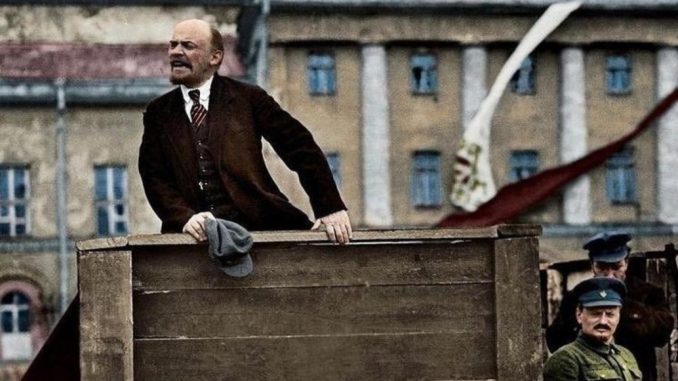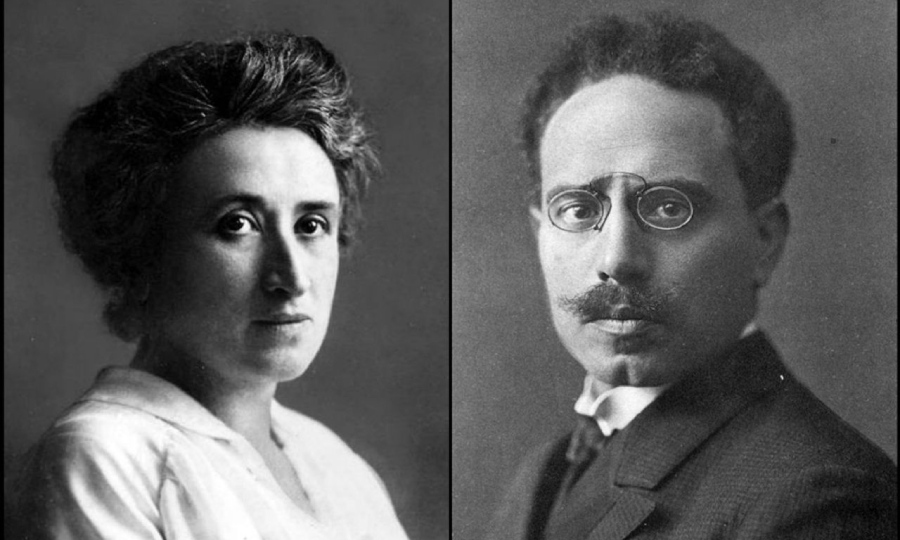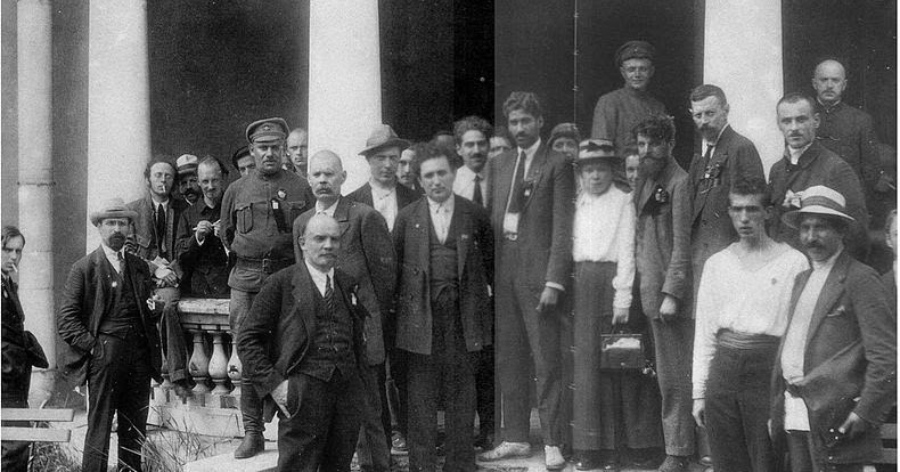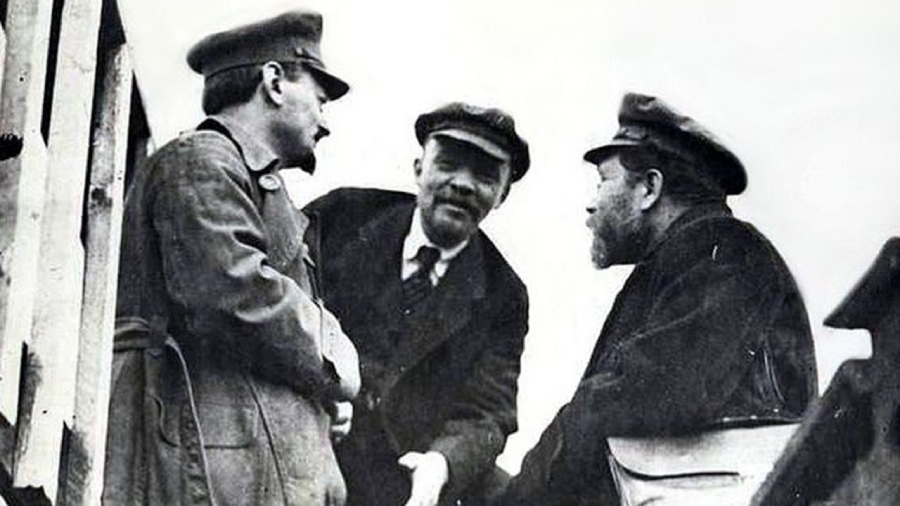
Almost a century has passed, this January 21, since the physical disappearance of one of the key revolutionaries of the contemporary history of mankind. A brief reminder of the main facts of his biography and contributions would take several articles, to barely scratch the surface of his extensive and profound legacy, or to polemicize with his old and new detractors. I will dwell in a few brief lines on his greatest feat: the founding of the Third International.
And why the International? When the revolutionary born in Simbirsk can be remembered for the creation of the key tool for the seizure of power -the Bolshevik party- of the first socialist revolution in history. The first that managed to sustain itself and expand its swell far beyond its borders, unlike that general rehearsal that was the Paris Commune. Or he can be recognized because he commanded with Trotsky and the front page of the party that triumphant insurrection that changed history, or because he confronted early on the bureaucratic degeneration by opposing the undertaker of the revolution, Joseph Stalin.
Why not highlight the profound writer who bequeathed us works that still have an enormous validity, such as “What Is To Be Done?”, “The Renegade Kautsky”, “Imperialism The Highest Stage…”, or “The April Theses”, “The State and the Revolution” or “Left-wing Infantile Disorder…”, among an extensive production reflected in his “Complete Works” or in the resolutions of the Party and the International written by his hand and handwriting?
Because in the foundation and construction of the Third, perhaps the essence of the practical theoretical legacy of Marxism was summarized, the conviction that capitalism is a world system and that any partial conquest, however great it might be, like the Russian revolution itself, had to become a link in the strategic fight and it was necessary to be willing, as Lenin and Trotsky were, to sacrifice it for the sake of a superior link of the world revolution, as for example, the triumph of the German revolution.
That location placed him among the minority of social democrats who faced the defection of the leadership of the Second International, which, violating all principles, accompanied their respective bourgeoisies in that war of inter-imperialist pillage that was the First World War of 1914. The one that led him to participate in the Conference against the Zimmerwald War in 1915, when in Trotsky’s words “all the internationalists of the world” could fit “in four cars”.
It was also the one that led him to wage an important political debate within that conference, against the centrist wing represented by only 8 delegates who, according to Trotsky, did not share the need to break with the Second International and build revolutionary parties oriented to the seizure of power. In short, to begin the work that would end years later with the founding of the Third International.
March 4, 1919
On March 2 the work of the International Conference began, which would extend until March 6, giving foundation to the Third International. Russia was crossed by a bloody civil war, by the invasion of 14 imperialist armies to support the counterrevolutionary reaction against the emerging workers’ state, which hindered the arrival of international delegations. Its foundation had been described as premature by enormous leaders of the time, such as the referent of the German party Rosa Luxemburg, who together with Carl Liebknetch, had recently been assassinated by the bullets of the social democratic police chief Noske.

Despite this, and after having waited for the right moment, Lenin threw himself into the organization of this enormous task, once the German Spartacus League, led by these two greats of world revolutionary history, founded in December 1918 the German Communist Party, as a product of the merger of the League with the Internationalist Communists of Germany. The previous month the German revolution had broken out. In view of this fact Lenin writes: “When the Spartacus League was renamed the German Communist Party, the foundation of the Third International, of the Communist International, truly communist, truly international, became a fact. Formally the Third International was not yet consecrated, but the Third International exists in reality, from this moment”.
The formal founding of the Third International took place on March 4, 1919. The Bolshevik party was much larger – it had 250,000 militants – than even the parties that had a real existence, such as the German, Polish, Austrian or Hungarian. The rest were only small revolutionary groups.
Lenin from the beginning opposed considering the new international as an extension of the Russian Bolshevik party. In this sense Pierre Broué points out that, faced with the policy of converting it, in order to act in the revolutionary situation that crossed Europe, into “a centralized world party, as ‘an international Bolshevik party’. Only Lenin seemed to show some uneasiness before such Russification, since this organization, artificially imposed on parties that had neither the experience nor the tradition of the Russian revolutionaries, threatened to hinder its development”. In this sense the Bolshevik leader “had proposed that the headquarters of his executive be located in Berlin in order to diminish in this way the influence of the Russian leaders”[i].
The sessions of this international conference dealt with Lenin’s document “Theses and Report on Bourgeois Democracy and the Dictatorship of the Proletariat”, in which he defends the need for the seizure of power to overthrow the bourgeois state and impose a workers’ state, replacing the dictatorship of the bourgeoisie by the dictatorship of the proletariat.
Phrases like “history teaches us that no oppressed class has ever come to power and that it cannot do so without suffering a period of dictatorship”; “the most democratic bourgeois republic is only a machine for the oppression of the working class by the bourgeoisie”; “The capitalists have always called ‘freedom’ the freedom of the rich to amass fortunes and the freedom of the workers to starve” or “The dictatorship of the proletariat supposes the true exercise of democracy by the working classes”, express Lenin’s battle against reformist illusions and are functional to the most important fight, the need to abandon any illusion that it is possible to reform the Second International and return to its beginnings, the imperiousness of founding a new revolutionary international, the Third International.
The foundation of the Third, in spite of the enormous difficulties it underwent and some ominous forecasts, was a success. A few months later power was seized in Hungary -later sadly lost due to the inability of its leader Bela Kun to give an answer to the agrarian issue and the organization of the revolutionary party-.
The crisis unleashed by the disaster of the war will have an impact on the consciousness of broad layers of the working class and on the bases of the social democratic parties. Before the second congress (1920) the Italian Socialist Party, the Norwegian Workers Party and the Hungarian Socialist Left Party joined the International.
The situation forced the centrist leaders, without having revised their positions, to ask to join the new revolutionary international. The French Socialist Party, the Independent Socialist Party of Germany, the English Independent Labor Party, among others, affiliated to the International, in addition to those mentioned above. This forced the center of the Second Congress to debate the “21 conditions” to be affiliated to the Third International with the objective of putting a brake on the opportunist elements that wanted to join the revolutionary international. As a result of this, the “two and a half” International was formed, which tried to constitute itself as a centrist spawn between the revolutionary Third and the betrayal of the Second, without success.

The third (1921) and fourth (1922) congresses
If the first two were centered on political battles against opportunism, the third and fourth congresses took place in a different situation. The European conjuncture had entered an ebb. Capitalism had succeeded in overcoming the revolutionary attacks resulting from the end of the world war and it was decisive to adopt tactics that would allow the young communist parties to penetrate decisively among the working masses of their countries and to dispute the leadership of the old social-democratic leaderships. A fundamental task to lead and bring to a successful conclusion the future revolutionary waves.
An obstacle to such an undertaking was the far-left tendencies that developed in the revolutionary formations adhering to the Third. These denied trade union struggle, participation in parliament and cultivated putchist strategies for the seizure of power. These tendencies had already caused damage, as was the premature putch that the leadership of the German CP led in 1921, with disastrous consequences for the leadership of that party, among other manifestations.
The congresses pushed the tactic of the United Workers Front to strengthen the intervention of the CPs in the mass movement. Another of the achievements of the International in those years was “the statement of the historical importance of the national liberation movements in the colonial and semicolonial territories”. Already in the “Principles and guidelines on the national and colonial question” written by Lenin at the Second Congress, it was considered “necessary to make a temporary alliance with the revolutionary nationalist movements, but it was stressed that the task of the communists was not to unite with these nationalist parties, but to sustain, unconditionally, the independent character of the revolutionary movement”[ii].
The Fourth Congress noted that in these first three years a very important organizational leap had been made. Sections had been built in all continents and in almost all countries. The young CPs were leading important battles against the capitalist governments in many parts of the world. The creation of Lenin, Trotsky and the revolutionaries of the time was already a great tool, the most important tool of the world revolution.

The struggle against the Stalinist counterrevolution
In 1923 the European and world situation changed. The German revolution of that year was defeated, which left the republic of the soviets in an important international isolation, the Russian revolution suffered a period of exhaustion given the enormous effort that the masses and the vanguard had to make after years of war, revolution and civil war. Lenin’s illness and later death will accelerate the process of bureaucratization within the party first and then the international itself, product of a counterrevolutionary process.
Lenin, despite having developed a painful illness from 1922 onwards, did not cease to fight against this process. In November 1922 he pointed out: “What we need is that the communists control the machine to which they have been assigned and not, as often happens among us, that the machine controls them”[iii]. A few weeks later he proposed an agreement to Trotsky to fight jointly against the formation of the party bureaucracy.
His proposal could not be carried out since a new attack of his illness put him in bed until his death in January 1924. In his testament, which the bureaucracy refused to publish at the time, he asked for the displacement of Stalin from the leadership of the party and made the vindication of the already persecuted Trotsky.
It was not by chance that at the end of 1924 Stalin launched his theory of “socialism in one country”. The coming to power of a conservative bureaucracy, parasite of the conquests of the revolution, based on the defeat of the world revolution and the exhaustion of the Russian masses after so much struggle, elaborated a theory that first destroyed the party democracy and the revolution and then the International, turning it into an agency of foreign relations of the Russian bureaucracy. The Third had its last congress in 1935 and was formally dissolved in 1943.
It remained in the hands of Trotsky and the Trotskyists to continue the greatest work of Lenin and the revolutionaries of the beginning of the 20th century. Those of us who propose with the founding of the International Socialist League (ISL) to resume that path and those teachings do so with the same enthusiasm with which Vladimir Ilich Ulyanov did it.
[i] Quoted from “El partido Bolchevique”, page 116, Alternativa Socialista Editions, Dec. 2005
[ii] Quoted from “First Three Internationals” written by Novack, Frankel and Feldman, page 111, Antídoto Editons 1987
[iii] Lenin, Complete Works, Volume 33








